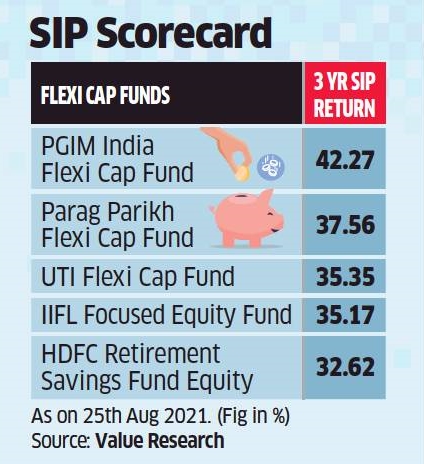As India’s indices scale new summits each passing day, it’s time to dust off that decades-old concept – and buy more on dips.
That’s what experts are asking savers to do with their SIP, especially at a time when forecasting the market’s broader direction might be fraught with as much danger as predicting the global impact of an eventual Fed ‘tapering’.
Given the significant rally across sectors and broader markets, it is better to adopt a buy-on-dips allocation strategy. Such a strategy warrants additional investment at every small correction of 200-400 points on the headline Nifty 50 index apart from regular SIP.
On every such dip, an investor could allocate an amount equal to their monthly SIP instalment.
Earnings growth is currently low but is expected to rise significantly over the next two years.
This will ultimately drive equity markets higher. We expect Nifty EPS to grow at 24.2% CAGR in FY 2021-23,” adds Jain.
A note by HDFC MF says NIFTY 50 is trading near 19.4x FY23E price to earnings ratio. In view of the low interest rate environment and healthy earnings growth outlook, these multiples look reasonable.
However, on an overall basis, the valuation of equity market is no longer cheap, with the market-cap to GDP ratio at 92% and the gap between 10-year bond yield and 1-year forward NIFTY 50 earnings yield at 1.5% — and inching closer to its longterm average of 1.7%.
Fund managers believe while the overall outlook on the equity market remains positive, investors need to be grounded and not get over exposed to equity as an asset class so that they can protect themselves from sharp and unexpected selloffs.
The PE ratios look very rich. Unless earnings growth starts stagnating or falling, the valuations will remain fairly rich in an environment of easy liquidity and rising earnings.
Some experts believe investors can put in 75% money to equities now and stagger the balance 25% as and when there is a correction.
Wealth managers believe flexicap or multicap funds, which give flexibility to fund managers and invest across a mix of large, mid- and smallcap stocks, remain better placed in an environment where broader markets have already seen significant outperformance.



